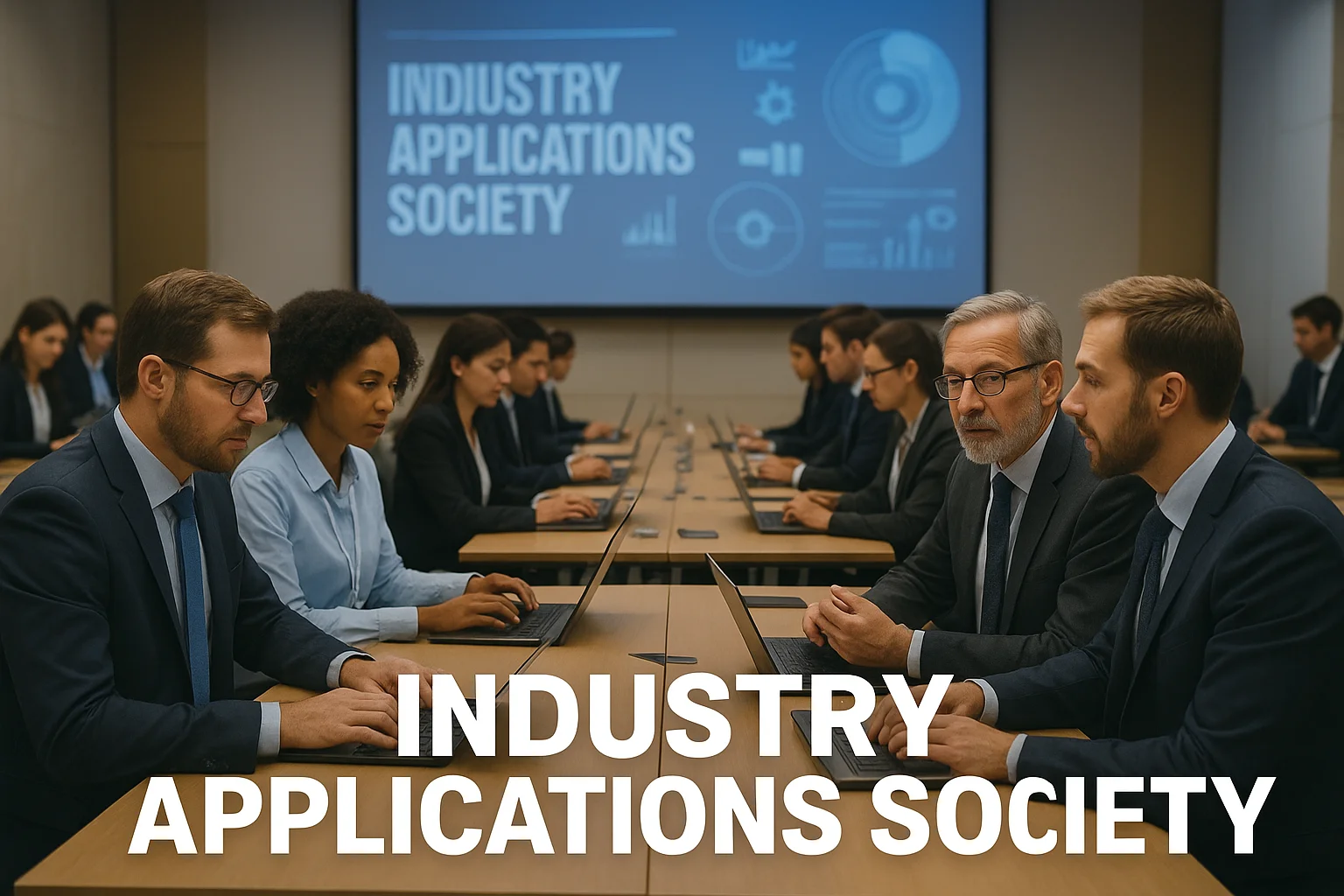1. Introduction
The industry applications society is a technical powerhouse within IEEE. It bridges the gap between theory and industry. It helps engineers apply research in real-world settings. The society thrives on volunteers and professionals working together. You’ll discover its mission, history, members, publications, events, and real value in this detailed guide.
2. What Is the Industry Applications Society?
The industry applications society is a specialized part of IEEE. It focuses on electrical and electronic systems used in industry and commerce. It serves engineers across sectors like power systems, manufacturing, automation, and safety. The IAS emphasizes linking cutting-edge theory with practical solutions that industries can adopt. It supports innovation, reliability, and sustainability in complex industrial environments IEEE Industry Applications Society.
Volunteers run it. They lead technical committees, organize events, and produce industry-grade guidance. The society’s mission is clear: advance industrial engineering both in theory and in our factories, plants, and infrastructure.
3. History and Evolution of the Industry Applications Society
The roots of the industry applications society go back to before IEEE existed. Engineering professionals in the American Institute of Electrical Engineers (AIEE) formed technical groups like the Industry Division and General Applications. In 1965, after IEEE formed through the merger of AIEE and IRE, those groups became the Industry and General Applications Group (IGAG) with Robert B. Moore as its first president IEEE Industry Applications Society.
Just seven years later, on January 1, 1972, IGAG earned full society status as the Industry Applications Society IEEE Industry Applications Society.
A year before that, in 1966, the society launched the Transactions on Industry Applications journal, a key milestone IEEE Industry Applications Society. That same year, they held their first Annual Meeting in Chicago. It featured 21 technical sessions and drew nearly 900 attendees—supported by 14 technical committees. It showcased the society’s early commitment to both industrial practice and academic rigor IEEE Industry Applications Society.
Over the years, IAS grew. In 1995, it introduced the Myron Zucker Undergraduate Student Design Award. It also launched the IEEE Industry Applications Magazine, elevating its newsletter into a full-fledged technical magazine IEEE Industry Applications Society.
In 1997, IAS expanded internationally by collaborating with IEEE Power Electronics Society and European bodies at conferences like APEC and a meeting in Japan. That opened pathways for global cooperation IEEE Industry Applications Society.
By 2000, IAS held its first Annual Meeting outside North America, in Rome. That same year, the Zucker Travel Program began, helping students attend major events IEEE Industry Applications Society.
In 2015, IAS celebrated its 50th anniversary. IEEE IAS published a special magazine issue to honor the milestone and reflect on a half century of service IEEE Industry Applications Society.
4. Membership and Global Network
Today, the industry applications society connects more than 11,000 global members, spread across 370+ chapters worldwide IEEE Industry Applications Society. Members include industry professionals, academics, and students. They benefit from local chapter meetings, regional workshops, and international conferences.
Members attend flagship events like the IEEE IAS Annual Meeting. They also participate in themed conferences such as Energy Conversion Exposition, Cement Industry Conference, Industrial Energy Efficiency Workshop, Petroleum & Chemical Industry Conference, Pulp and Paper Conference, and more IEEE Industry Applications Society.
These gatherings provide platforms for sharing technical insights, networking, and staying updated on industry trends.
IAS members also get access to all IEEE societies’ benefits. That includes the massive IEEE Xplore digital library—home to millions of papers and conference proceedings IEEE Industry Applications Society. Members can contribute to standards. IAS committees influence more than 25% of all IEEE industry-related standards. They also oversee four technical departments that cover major industrial sectors IEEE Industry Applications Society.
Many members value the sense of community and professional growth:
“This sense of mutual benefit has made thousands of professionals from all over the world glad they joined IAS.” IEEE Industry Applications Society
5. Technical Structure and Committees
The industry applications society organizes its work through four main technical departments. Each department supports multiple technical committees. These groups drive innovation, review research, and shape industrial best practices IEEE Industry Applications Society.
The departments are:
- Process Industries – handling cement, pulp & paper, metals, mining, petroleum/chemical, and safety guidelines.
- Industrial Power Conversion Systems – focusing on drives, converters, power electronics, renewables, and transportation systems.
- Industrial & Commercial Power Systems – addressing power system design, protection, and distribution.
- Manufacturing Systems Development & Applications – covering automation, robotics, and manufacturing processes.
These committees play key roles in standards development. Members gain recognition and the chance to influence engineering practices throughout industry.
6. Publications and Knowledge Sharing
The industry applications society shares knowledge through highly respected publications:
- IEEE Transactions on Industry Applications: This bimonthly, peer-reviewed journal covers real-world electrical systems across industrial sectors, including power protection, renewable integration, automation, electric machines, and industry-specific technologies like mining and petroleum. It had an approximate impact factor of 4.5 in 2024 Wikipedia. Notably, IAS enforces a “presentation-first” policy: papers must originate from IAS-sponsored conference presentations—ensuring quality and relevance Wikipedia.
- IEEE Industry Applications Magazine: Provides technical articles, product reviews, case studies, educational features, and conference highlights. It serves as a practical, accessible resource for members IEEE Industry Applications Society.
IAS also co-sponsors other related journals, such as Transactions on Smart Grid, Sustainable Energy, and Electrification Magazine, enhancing interdisciplinary knowledge sharing IEEE Industry Applications Society+1.
7. Conferences and Events
Events are core to the industry applications society. Here are some key 2025 conferences:
- 2025 IEEE Symposium on Diagnostics for Electric Machines, Power Electronics and Drives (SDEMPED) — August 24–27 in Dallas, Texas
- 2025 IEEE 9th Forum on Research and Technologies for Society and Industry (RTSI) — August 24–26 in Tunis, Tunisia
- 2025 International Conference on Innovative Mechanisms for Industry Applications (ICIMIA) — September 3–5 in Tirupur, India
- 2025 IEEE Industrial Electronics and Applications Conference (IEACon) — September 8–9 in Kota Kinabalu, Malaysia IEEE Industry Applications Society.
These events offer tutorials, workshops, technical sessions, and networking. They are a great way for members to stay engaged with the latest trends.
8. Role in Standards Development
The industry applications society contributes to IEEE’s broader standards development. While the IEEE Standards Association provides the organizational framework, IAS brings the technical expertise rooted in industrial contexts WikipediaIEEE Industry Applications Society.
IAS committees help shape IEEE Color Books. These are guidelines widely used for designing industrial and commercial power systems IEEE Industry Applications Society.
Through committee work, IAS members directly impact standardized practices that enhance safety, reliability, and efficiency across the industry.
9. Professional Development and Student Opportunities
The industry applications society supports growth for both professionals and students:
- Zucker Travel Program helps students attend the Annual Meeting IEEE Industry Applications Society.
- Myron Zucker Undergraduate Student Design Award honors outstanding student projects IEEE Industry Applications Society.
- Distinguished Lecturer Program and local chapter speakers share best practices.
- Webinars, workshops, and recorded tutorials live in the IAS Resource Center for continuous learning IEEE Industry Applications Society+1.
These resources prepare members to lead, innovate, and stay current in an evolving industrial landscape.
10. Why the Industry Applications Society Matters Today
Today’s industries face rapid shifts—automation, smart grids, sustainability, and digital transformation. The industry applications society is at the heart of driving safe, efficient, and modern industrial systems. It helps engineers adapt cutting-edge research into practical designs.
IAS matters because it:
- Promotes safety, sustainability, and economic efficiency.
- Keeps professionals connected with peer experts and industry trends.
- Influences standards that ensure reliable industrial operation.
- Mentors future engineers through student programs and volunteer leadership.
11. How to Join the Industry Applications Society
Joining the industry applications society is straightforward:
- If you’re an IEEE member, add IAS for a nominal fee IEEE Industry Applications Society.
- If you’re not an IEEE member, you can join as an Organization Affiliate at reduced cost. You must be part of a related professional group, such as EPE, IEEJ, ASME, or ISA IEEE Industry Applications Society.
- Students get discounted rates to access conferences, publications, and awards IEEE Industry Applications Society.
Membership brings access to global chapters, networking, events, and leadership opportunities.
12. Community Voice: What Members Say
Here’s what real professionals and students share about IEEE membership in general—IAS-specific experiences are similar:
“Industry magazines are a good way to keep up with what the industry is focusing on.” Reddit
“Networking within IEEE helped me find jobs and learn about important developments.” Reddit
“Student membership fee is super cheap—great way to enjoy IEEE Xplore and networking.” Reddit
These insights echo across IAS as well, with many members emphasizing the value of practical publications, local connections, and volunteer involvement.
13. Conclusion
The industry applications society stands out in the engineering world. It combines a rich history, vibrant community, and practical focus. From standards development and high-impact publishing to focused conferences and student support, IAS influences the industrial engineering landscape daily.
Whether you’re a student, academic, or seasoned engineer, IAS offers growth, influence, and community. Join the society. Be part of shaping industrial solutions for tomorrow.


